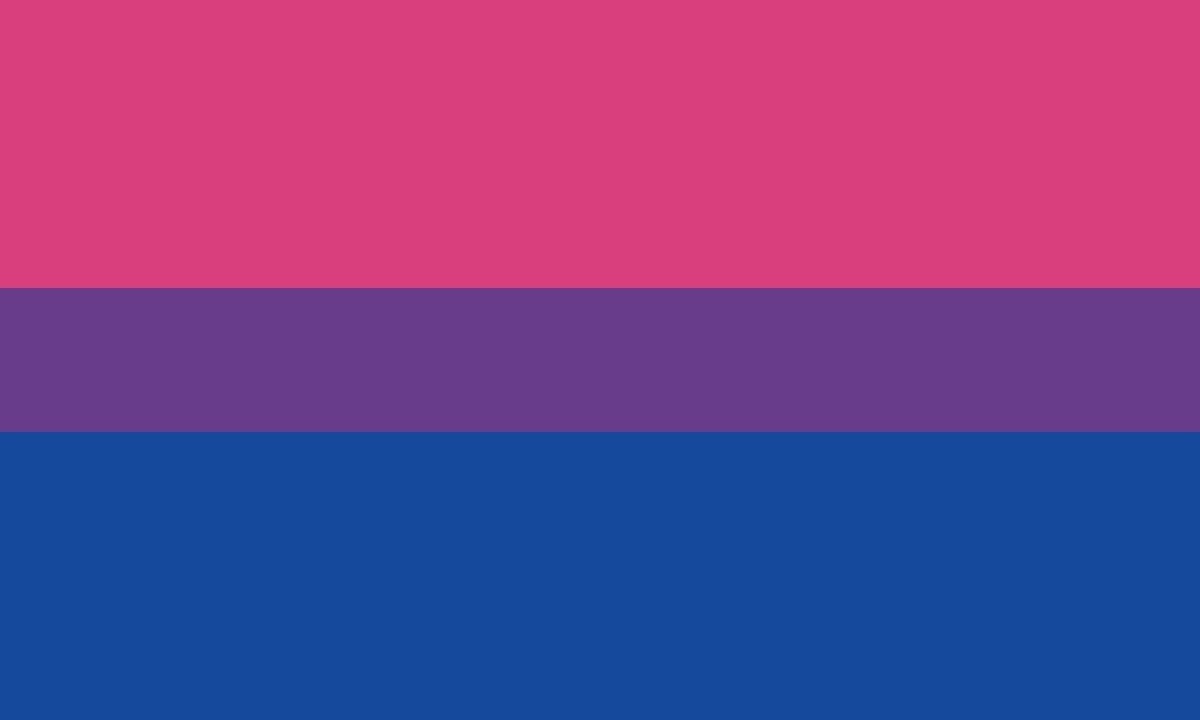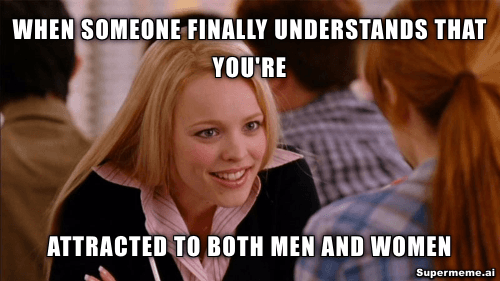Bisexuality is defined as attraction to both men and women. It is a term that is often misunderstood, and many people are not aware of what it means. This can lead to a lot of confusion, misinformation and stigma surrounding the bisexual community.
This blog post will discuss the meaning of bisexuality and the difference between it and pansexuality. We will also examine the bisexual pride flag, bisexual awareness week, and stories from the bisexual community. Additionally, we will explore how to know if you're bisexual and bisexual celebrities.
What does bisexual mean?
Bisexuality is a sexual orientation that refers to emotional, romantic, or sexual attraction to both men and women. It is important to remember that being bisexual does not always mean an equal attraction to two genders. A person who identifies as bisexual may be attracted to different genders in different ways or to different extents. The perception of bisexuality within the LGBTQ+ community varies, and individual experiences of bisexuality are as diverse as the community itself.
Bisexual awareness week
Bisexual Awareness Week, or #BiWeek, is celebrated annually. Its purpose is to raise awareness about bisexual people and the issues they face. This event helps promote bisexual visibility. It typically takes place in September and culminates in Celebrate Bisexuality Day on September 23.
This week, events, discussions, and campaigns are happening around the world. They focus on bisexual individuals and their unique experiences and challenges. This awareness helps bring attention to these issues.
Bisexual Awareness Week provides a platform to address any misunderstandings and negative biases surrounding bisexuality. We can also use this time to call for equal rights and acceptance of those who identify as bisexual.

What is the bisexual pride flag?
The bisexual pride flag is an iconic symbol of the bisexual community.
The flag has three stripes. The pink stripe symbolizes same-sex attraction. The blue stripe stands for opposite-sex attraction. The purple stripe symbolizes both same- and opposite-sex attractions.
According to Wikipedia the bisexual pride flag was designed in 1998 by artist Michael Page. Its purpose was to help members of the bisexual community to identify and recognize each other. It has since become a visible representation of bisexual pride, representing the diversity and uniqueness of individuals who identify as bisexual.
Bisexual celebrities: Visibility in the spotlight
Visibility matters. It makes a difference when individuals, especially public figures, openly identify as bisexual. This representation can help others feel seen, understood, and less alone. It can also challenge stereotypes and misconceptions about bisexuality.
Here are a few bisexual celebrities who have spoken about their sexual orientation:
- Megan Fox: The actress openly speaks about her bisexuality and acknowledges that she is attracted to both men and women.
- Angelina Jolie - The Hollywood actress, filmmaker, and humanitarian, Angelina Jolie, has openly identified as bisexual for many years. Jolie is renowned for her acting in movies such as "Girl, Interrupted" and "Maleficent". She has spoken about her sexuality in various interviews. This has helped to make bisexuality more visible in Hollywood.
- Drew Barrymore: The actress and producer has been open about her bisexuality for many years. In interviews, she has expressed that she doesn't think about the gender of her partners in terms of her sexual orientation.
While these are just a few examples, there are many more bisexual celebrities out there. Their openness about their sexual orientation helps to normalize bisexuality and contributes to greater representation and acceptance in society.
Do bisexual men have different experiences than bisexual women?
Bisexuality does not look the same for everyone. People's experiences of their sexual orientation can be shaped by a variety of factors, including their gender. Bisexual men and women might face different challenges and stereotypes.
Bisexual men often experience skepticism and erasure. This is due to the incorrect belief that all men attracted to other men are automatically gay.
Bisexual women, on the other hand, often face hypersexualization and the harmful stereotype that they are "just experimenting" or seeking attention. It's crucial to challenge these misconceptions and recognize the validity of all bisexual experiences.
What is the difference between bisexual and pansexual?
Bisexuality and pansexuality are both orientations that refer to sexual and/or romantic attraction towards more than one gender. However, they are not exactly the same.
Bisexuality is generally understood as the attraction to two or more genders. The prefix 'bi-' stands for 'two'. However, it is important to remember that, in the context of bisexuality, it does not necessarily imply only two genders.
This misinterpretation has led to a common misconception that bisexuality only includes attraction towards males and females, which isn't the case. Many bisexual individuals are attracted to a variety of gender identities.
Pansexuality, on the other hand, is characterized by potential attraction towards individuals of any gender identity. The prefix 'pan-' means "all" or "every". This indicates that pansexuality includes attraction to all gender identities. These include male, female, transgender, non-binary, genderqueer, and other non-traditional gender identities.
The key difference between bisexuality and pansexuality lies in how they perceive and express attraction. Some people who identify as bisexual may experience different kinds or degrees of attraction towards different genders. For instance, they might be attracted to different genders in different ways or to different extents.
Pansexuality is often described as "gender-blind". This means gender doesn't affect a person's ability to be attracted to someone. Pansexual individuals can be attracted to people regardless of their gender. They often emphasize that the individual is more important than their gender.
Remember, these definitions can be flexible, and it's up to each individual to choose the term that fits them best. Some people might identify as both bisexual and pansexual, while others might prefer one term over the other. Ultimately, the goal is to find a label that makes you feel comfortable and accurately represents your unique experiences of attraction.

How do you know if you're bisexual?
Recognizing one's sexual orientation can be a deeply personal and unique journey. Some people might know they're bisexual from a young age, while others might not realize it until later in life.
It's normal to question your sexual orientation and to take time to figure out who you are.
You may be bisexual if you feel attracted to both men and women. This can be fantasizing about people of different genders or identifying with other people's bisexual experiences. However, it's important to remember that no one can determine your sexual orientation but you. It's okay to be unsure and to explore your feelings at your own pace.
Bisexual stories: Experiences from the community
Bisexuality, like all sexual orientations, encompasses a spectrum of experiences. For some, their bisexual identity is essential to their sense of self. For others, it is just one aspect of their identity. Some individuals realize their bisexual orientation early in life, while others come to understand it later.
The media and literature have also begun to represent these diverse experiences more frequently, offering valuable visibility for the bisexual community.
You can find bisexual stories that our members shared in our coming out group. Additionally, you have the option to share your own experience by downloading the LesBeSocial app.
Conclusion
In conclusion, both bisexuality and pansexuality are valid and recognized sexual orientations within the LGBTQ+ community. While they may seem similar at first glance, the key difference between them lies in the way they define attraction.
Bisexuality is characterized by an attraction to both males and females or more than one gender. Pansexuality is different. It is defined as the ability to be attracted to people regardless of their gender identity. This means it covers a wider range of people.
It is essential to keep in mind that everyone has different interpretations of these definitions. Sexual orientation is highly personal and unique to each individual.
The bisexual flag is a symbol of diversity and unique identities. It is distinguishable by its colors. This flag represents the range of identities that fall under the bisexual umbrella. It provides visibility, fosters a sense of belonging, and contributes to the broader recognition and understanding of the LGBTQ+ community.
Now, we would love to hear from you. What are your experiences and thoughts about bisexuality? How has the visibility of the bisexual flag impacted your life or your understanding of these orientations? Have you used LesBeSocial to connect with others who identify as bisexual?
Please feel free to share your stories, questions, and insights in the LesBeSocial app. Your experiences are valuable and can help others who are navigating their understanding of their sexual orientation. Let's continue this conversation and build a stronger, more understanding community together.






